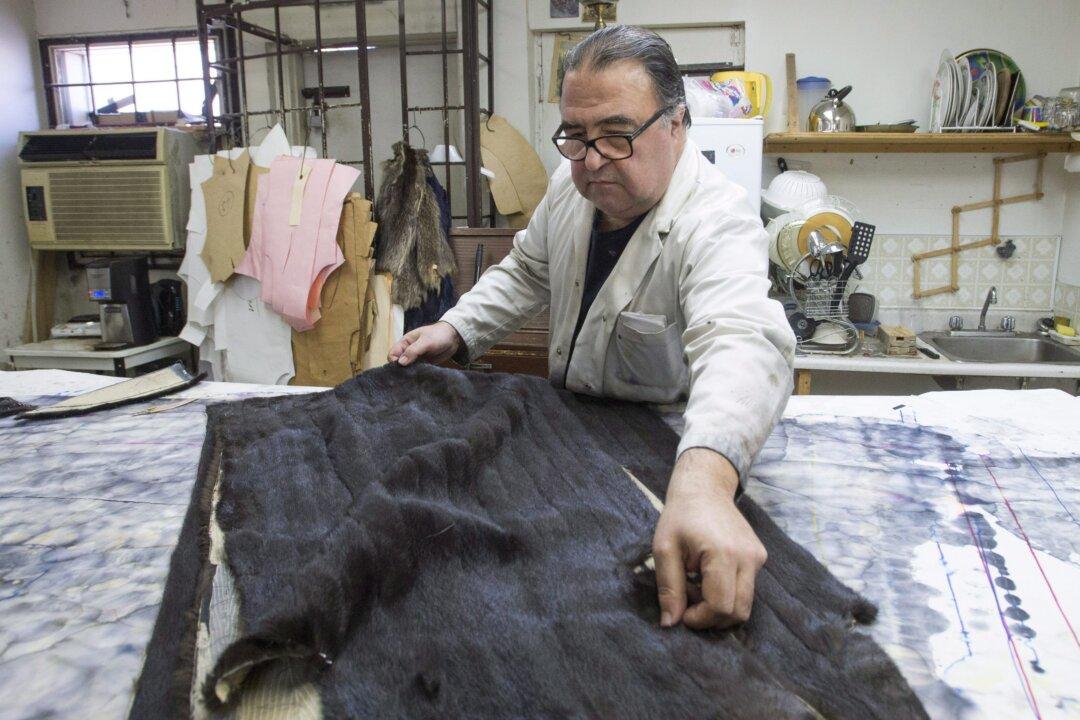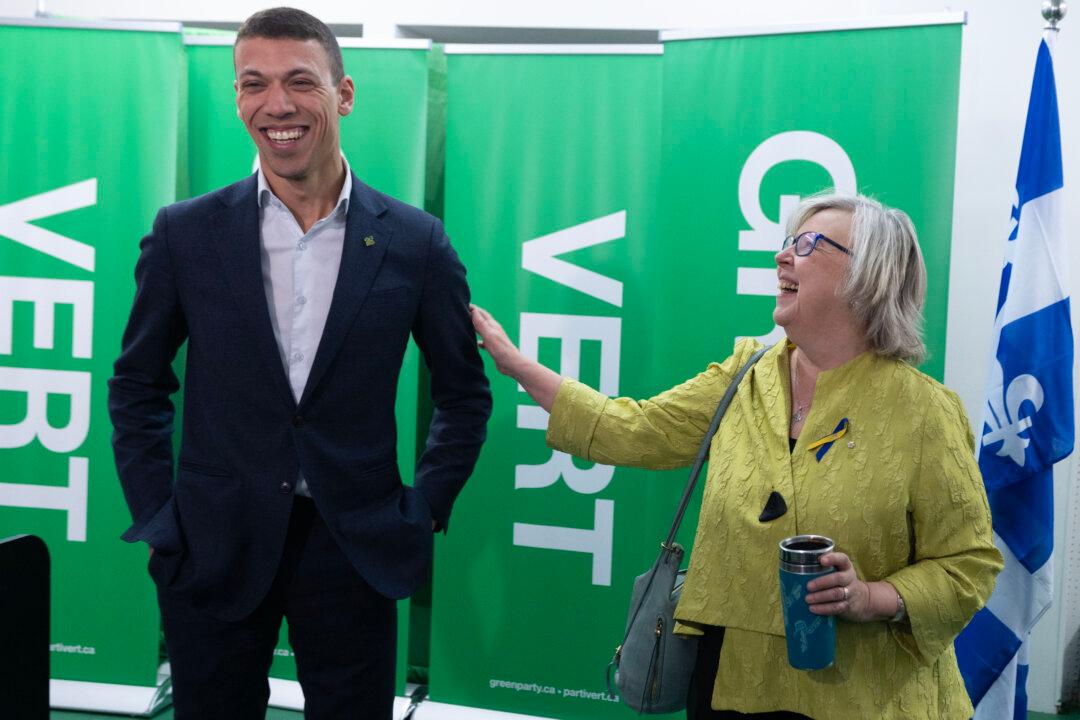MONTREAL—As Sarkis Ajamian carefully slices the head off a silver fox pelt—being sure to not cut any of the silky grey hair—he’s participating in an increasingly rare Canadian tradition.
Ajamian is a third-generation furrier and one of the dwindling number of people left in Montreal who specialize in transforming animal pelts into fur coats.
The process is labour-intensive, with much of it still done by hand using methods that have remained largely unchanged since Ajamian’s grandfather launched the family business in Armenia in 1890.
“A real furrier knows how to put the skins together so everything looks exact, because you’re bringing in something from nature,” says Ajamian, 59.
But although many techniques remain the same, Montreal’s fur industry has changed profoundly since Ajamian entered the business 25 years ago. Today he is one of only a few dozen furriers left in a city once called the “fur capital of North America,” where foreign buyers flocked to buy pelts at auction and small companies galore occupied the downtown fur district.
Montreal, the historic hub of Canada’s fur trade, benefited from waves of immigration that attracted skilled furriers to the city in the first half of the 20th century.
By the boom period of the 1970s and ‘80s, there were about 200 fur manufacturing and supply companies in the city, according to Alan Herscovici, executive vice-president of the Fur Council of Canada.
Today, he estimates only 40 remain, with few furriers like Ajamian still practising the old skills.
In the workshop above his store, Ajamian works with a pelt, cutting it into long strips which he sews together by machine.
He and his workers will shape and cut the fur blocks using a pattern, sew it together, and send it elsewhere to be cleaned in large drums of sawdust and chemicals.
The finishing is done in-shop, with details such as pockets sewed by hand.
Completed products are sold in the store below under the watchful eye of Ajamian’s sister, Jacqueline.
At one time, the business paid well, but nowadays Ajamian says he can’t get a bank loan because “they tell me I’m working in a dead industry.”
He makes do with less tangible rewards: doing what he likes and having his work appreciated as art.
Decline of the industry
The fur industry’s decline began at the end of the 1980s and was caused by a trifecta of factors: a plummeting stock market, the gradual shift of manufacturing to China, and the rise of the animal-rights movement.
Advertising campaigns that painted the industry as blood-soaked triggered a public backlash against fur, resulting in sinking sales.
By 1992, the price of a mink pelt had dropped to US$20 from $50 in the late 1980s.
It would stay low for the next 10 years until demand from Russia and China began to push prices upward again, to a new historic high of more than $100 two years ago.
The industry that emerged from the downturn was a changed one, according to Herscovici.
Heavy fur coats were being replaced by lighter, more affordable pieces, and new designers were experimenting with techniques.
Ajamian changed too, carving out a new niche as a “recycling” specialist who restyles decades-old coats.
He points to a beaver fur coat, now unrecognizable after being dyed, sheared, and given a new lining to make it reversible.
“I gave a new life to this coat for another 30 years, and once 1/8th owner 3/8 is done she can give it to her daughter or her granddaughter and they can change it and wear it for another 30 years,” he said.
Fur making a comeback
Although fur auction prices are down again, Herscovici says that in terms of fashion, fur is coming back on top.
It appeared in more than 70 percent of designer collections last year, creating an opening for a new generation of Montreal designers, including many who have no family connections to the fur trade.
They include Rim and Rita Elias, sisters in their 20s who are finding success with a line of versatile fur pieces such as vests, purses, and fur-trimmed leather jackets designed to cross over from workplace to evening wear.
In the 18 months since launching Elama furs, they have gained some high-profile celebrity clients, including Montreal Canadiens defenceman P.K. Subban, and sold enough to quit their corporate day jobs.
Rim Elias, 29, says she and her sibling fell in love with the softness, durability, and luxurious feel of fur despite having no family connection to the fur trade.
“It’s really out of a passion and interest for this material that we’re in this industry today,” she said.
Herscovici sees designers like them as a sign of renewal in the industry.
“There’s a huge opportunity for different designers right now,” he said. “I think we’re on the cusp of a very different fur trade now.”
From The Canadian Press





